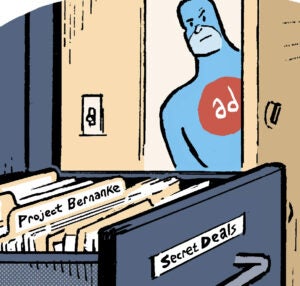Most of us don’t realize how much control we’ve already given up. With industry red flag reports now published regularly, we’re forced to confront the hard truth that control and transparency are further away than we thought.
At the same time, social platforms have shifted their content moderation approaches, with most of them embracing a community notes model. This includes fewer content restrictions, filtering and moderation, allowing more voices and narratives on the platform. Therefore, more inventory becomes available.
It’s no secret that past restrictions had prioritized key exclusion and block lists, which Meta CEO Mark Zuckerberg called out when he announced the company’s policy shift. Meaningful conversations and audiences had been silenced, limiting brands’ opportunities to grow stronger and more targeted audiences.
With many of these restrictions now going away, those critical of the new policies claim that they would undermine brand safety and control. But they won’t necessarily be detrimental to brands. The new content policies will enable connections with audiences that reflect a broader and true-to-life range of perspectives, expand inventory, and provide opportunities to ensure that content aligns with more appropriate contexts.
Brands and advertisers should always be making deliberate choices to ensure ads appear alongside the right content and context at the right time. But we must start reframing our mindsets. It’s not about what’s “right or wrong.” It’s about “what’s right for my brand and my consumers.”
More voices equal more opportunity, but it comes with risk
Brand safety has become far too reliant on reactionary measures that promote binary and broad exclusion lists that keep ads away from harmful, inappropriate or brand-damaging content. While brand safety efforts are designed to protect audiences and brand reputation, applying them too broadly can unintentionally exclude high-performing, relevant content that connects with audiences.
Overblocking is a serious issue that has unintended consequences, such as hindering brands’ ability to reach growth audiences and unfairly excluding misrepresented segments of their consumers.
This is where it becomes super important that we embrace nuance and contextually relevant opportunities to align content with audiences. When you work with brands and advertisers to ensure everyone understands this nuance, you’re giving them the power to decide where their ads appear and why, considering tone, sentiment, intent and relevance.
In sports, content referencing another team destroying, crushing or even killing the other can lead to it being wrongly excluded. The same goes for content moderation on social platforms.
Without context, you’re buying into a system where you’re blind until the end. What’s perceived as buying relevance is buying randomness.
When you over-index on brand safety without considering the context behind the content, the nuance is completely lost. And missing it limits a brand’s ability to engage and grow with real communities forming around new narratives.
Understanding the risks and maximizing the reach
Digital advertising is flush with opportunity, not just risk. The difference lies in how we structure, classify and surface content for brands to build deeper audience connections. These opportunities and risks aren’t limited to social platforms.
The open web has recently taken the brunt of programmatic shortcomings. February’s Adalytics report raised concerns about post-bid measurement and its flaws in protecting brands from unsafe, illegal content. The reaction called into question what constitutes brand safety.
Social platforms offer a different experience. Despite more unfiltered voices, their structure gives advertisers tools to manage complexity: rich metadata, clearer engagement signals and visibility into content tone, creator identity and audience behavior. These signals build connections beyond awareness.
Brands must pursue self-determination. When willing to define their own suitability frameworks, they can show up where it matters and be remembered.
Performance meets context
With major platforms like Facebook and X enacting new content policies, the boundaries of what’s visible and monetizable are expanding. Brands need to evolve beyond binary notions of safety in favor of strategies that reflect nuance and expanded voices in the social sphere.
The future of digital advertising requires a smarter design approach that considers both performance and contextual alignment, not just avoidance.
That means reframing content suitability as a strategy, not a safeguard. Know what your audience likes, how they engage and what resonates. Build around that. Define what’s suitable for your brand at the core and community level and ensure you’re showing up consistently; don’t just rely on filters.
Loosened policies will fuel creator-driven content, niche identities and topical ecosystems. These environments may not align with rigid or legacy brand suitability models, but they are increasingly where audiences spend time, form a community and deeply engage.
Navigating this space with greater transparency and understanding allows brands to show up more meaningfully.
“Data-Driven Thinking” is written by members of the media community and contains fresh ideas on the digital revolution in media.
Follow Channel Factory and AdExchanger on LinkedIn.


















